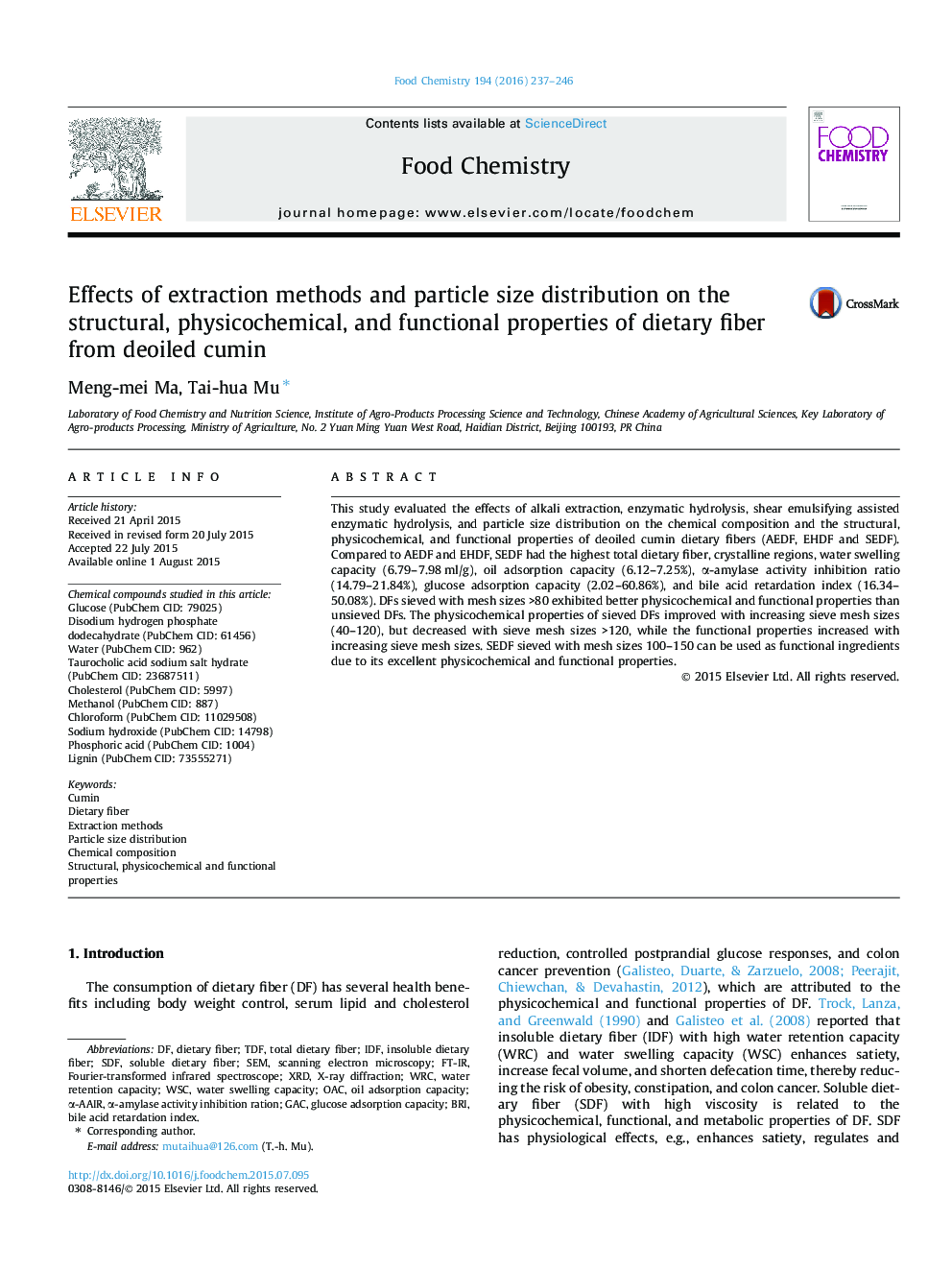| Article ID | Journal | Published Year | Pages | File Type |
|---|---|---|---|---|
| 7589804 | Food Chemistry | 2016 | 10 Pages |
Abstract
This study evaluated the effects of alkali extraction, enzymatic hydrolysis, shear emulsifying assisted enzymatic hydrolysis, and particle size distribution on the chemical composition and the structural, physicochemical, and functional properties of deoiled cumin dietary fibers (AEDF, EHDF and SEDF). Compared to AEDF and EHDF, SEDF had the highest total dietary fiber, crystalline regions, water swelling capacity (6.79-7.98 ml/g), oil adsorption capacity (6.12-7.25%), α-amylase activity inhibition ratio (14.79-21.84%), glucose adsorption capacity (2.02-60.86%), and bile acid retardation index (16.34-50.08%). DFs sieved with mesh sizes >80 exhibited better physicochemical and functional properties than unsieved DFs. The physicochemical properties of sieved DFs improved with increasing sieve mesh sizes (40-120), but decreased with sieve mesh sizes >120, while the functional properties increased with increasing sieve mesh sizes. SEDF sieved with mesh sizes 100-150 can be used as functional ingredients due to its excellent physicochemical and functional properties.
Keywords
IDFWRCOACWSCSDFTDFGACWater (PubChem CID: 962)Phosphoric acid (Pubchem CID: 1004)Insoluble dietary fiberBRIChemical compositionParticle size distributionExtraction methodsCuminFT-IRWater retention capacitySoluble dietary fiberDietary fiberMethanol (PubChem CID: 887)SEMScanning electron microscopySodium hydroxide (PubChem CID: 14798)X-ray diffractionXRDTotal dietary fiberCholesterol (Pubchem CID: 5997)Glucose (PubChem CID: 79025)
Related Topics
Physical Sciences and Engineering
Chemistry
Analytical Chemistry
Authors
Meng-mei Ma, Tai-hua Mu,
